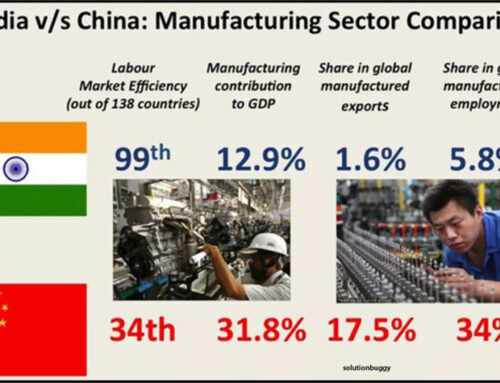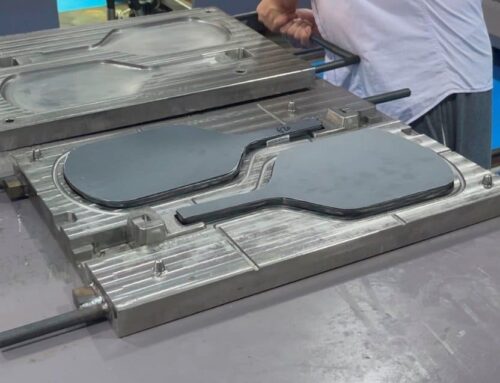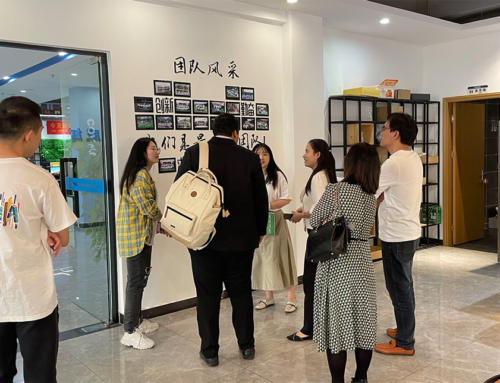As the global manufacturing center, China has long provided a wide range of products to countries worldwide. From electronic products to textiles and sports equipment, nearly every nation maintains close trade relations with China. However, with the recent escalation of the U.S.-China trade war, tariffs have become a more complex and critical issue, especially when importing sports goods such as pickleball paddles. Tariffs not only directly affect import costs but also impact a product’s competitiveness in the market. Therefore, understanding how to calculate tariffs and effectively reduce tariff costs is essential for any business involved in international trade. This article will provide a detailed explanation of tariff calculation methods and explore several effective strategies for reducing tariffs to help companies optimize costs in the current trade environment.
What Are Tariffs?
Tariffs are taxes imposed by governments on imported and exported goods, making them a significant cost in international trade. They serve as a source of government revenue and a tool for protecting domestic industries and regulating markets. For importers, tariffs are an essential expense to consider, as they directly influence the total cost of imported goods and their pricing in the market.
Tariff Calculation Formula and Steps
The calculation of tariffs involves several factors, with the basic formula as follows:
Tariff=Customs Value of Goods×Tariff Rate
The customs value of goods refers to the price of the goods as determined by customs in the destination country, usually comprising the following components:
- FOB (Free on Board) Price: The price of goods before they are loaded onto a ship at the exporter’s port.
- Transportation Costs: The cost of shipping goods from the exporter’s country to the destination country.
- Insurance Costs: The cost of insuring goods during transportation.
The specific calculation steps are as follows:
- Determine the HS Code: The Harmonized System (HS) Code is an international nomenclature for the classification of products. Each product has a corresponding HS code, which is crucial for determining the applicable tariff rate. Incorrect classification may lead to incorrect tariff calculations or even legal issues. HS codes can be obtained through the General Administration of Customs of China or the customs website of the destination country.
- Check the Tariff Rate: Based on the HS code, you can find the applicable tariff rate on the destination country’s customs website, the WTO database, or other international trade platforms. Knowing the correct tariff rate is essential for accurate tariff cost calculations.
- Calculate the Customs Value of Goods: The customs value equals the FOB price plus transportation and insurance costs. For example, if a batch of pickleball paddles has an FOB price of $10,000, transportation costs of $1,000, and insurance costs of $200, the customs value would be $11,200.
- Apply the Tariff Rate: Multiply the customs value by the tariff rate to calculate the tariff. For instance, if the tariff rate is 10%, the tariff would be $11,200 × 10% = $1,120.
- Sum Other Taxes and Fees: In addition to tariffs, other taxes like VAT (Value Added Tax) and excise taxes might apply. These taxes are calculated differently depending on the country and should be computed according to the respective country’s tax laws.
Channels and Methods for Tariff Rate Inquiry
Checking the tariff rate is a key step in calculating tariffs, and common channels include:
- Customs Websites: Most countries’ customs websites offer tools to check tariff rates by entering the HS code, providing the applicable tariff rate for that product in that country.
- International Trade Databases: Databases provided by international organizations such as the WTO or ITC contain tariff rate information for most countries worldwide.
- Professional Consulting Services: For complex product classifications or trade involving multiple countries, it may be beneficial to consult with tariff advisors or consulting firms to ensure accurate tariff rate information.
Example of Tariff Calculation
Suppose you are importing a container of pickleball paddles from China, the following is the specific calculation process:
- Product Details: 10,000 pickleball paddles, FOB price of $200,000
- Transportation and Insurance Costs: $3,000 for transportation and $500 for insurance
- Customs Value: $200,000 (FOB) + $3,000 (transportation) + $500 (insurance) = $203,500
- Tariff Rate: Assume it is 13%
- Tariff Amount: $203,500 × 13% = $26,455
In the end, you would need to pay $26,455 in tariffs. Additionally, you may need to pay other taxes depending on the import regulations of the destination country, such as VAT or excise taxes.
The Current Tariff Situation for Importing Pickleball Paddles from China
With the escalation of the U.S.-China trade friction, tariff rates on Chinese imports to the U.S. have been consistently increasing. As an emerging sports product, pickleball paddles have not been exempt from this trend. For businesses importing pickleball paddles from China, the increased tariffs mean higher import costs and tighter profit margins. Therefore, keeping abreast of the latest tariff policies and adjusting import strategies in a timely manner is key to maintaining competitiveness.
The U.S. has implemented a phased and product-category-specific approach to imposing tariffs on Chinese goods, with varying rates depending on the product category. For pickleball paddles, the tariff rate may vary depending on the material, use, and HS code classification of the product. Therefore, importers need to closely monitor announcements from the U.S. Customs and Border Protection (CBP) to ensure a comprehensive understanding of the latest tariff policies.
How to Reduce Tariffs
Although tariffs are a fixed cost, importers can still reduce tariff expenses through various methods, thereby optimizing their cost structure and improving market competitiveness. The following strategies have proven effective in practice.
Reduce Tariff Expenses During the Customs Declaration Phase
During the customs declaration phase, tariff expenses can be effectively reduced by optimizing product classification, accurate price declaration, and compliant documentation preparation. Here are the specific steps:
- Optimize Product Classification: Correct product classification is essential for reducing tariffs. By accurately categorizing products, companies can avoid higher tariffs resulting from incorrect classifications. Businesses can use the product’s technical parameters and actual usage to select the appropriate HS code, thereby applying a lower rate.
- Ensure Accurate Price Declaration: Accurate price declaration during customs clearance helps avoid additional tariffs imposed due to underreporting. Companies should provide a detailed cost structure, including production costs, transportation costs, and insurance costs, to ensure compliance and accuracy in the declared value.
- Prepare and Review Documentation: Document preparation and review are critical steps in the tariff calculation process. Ensuring the accuracy and consistency of invoices, packing lists, certificates of origin, and other documents can prevent tariff disputes caused by documentation issues.
Case Study: A company initially used an incorrect HS code when importing a batch of pickleball paddles, leading to a higher tariff rate. By working with a professional consultant, the company reexamined the product classification and adjusted the HS code, ultimately applying a lower tariff classification and saving over 15% in tariff costs.
Reducing Tariff Rates by Modifying Product Classification
The HS code of a product directly determines the applicable tariff rate. Companies can lower their tariffs by carefully studying product attributes and technical parameters and reasonably modifying the product classification. Here are the specific operational steps:
- Study Product Characteristics: Analyze the material, usage, and technical parameters of the product to find a classification method that applies a lower rate. For example, some composite material products may fall into different categories, each with a different rate.
- Consult with Tariff Experts: For complex product classifications, it is advisable to hire a tariff expert or professional consulting firm to analyze the product and ensure that the chosen classification method complies with international trade regulations while reducing tariffs.
- Adjust Customs Documents: Adjust the HS code, product description, and related documents in the customs declaration based on the new product classification to ensure consistency with the new classification.
Case Study: An importer initially classified carbon fiber and fiberglass composite pickleball paddles as “all-carbon fiber paddles,” which carried a high tariff rate. After consulting with a professional advisor, the importer reclassified the product as “composite material paddles,” which resulted in a 5% tariff reduction, saving significant tariff expenses.
Leveraging the Tariff Differences Between Sea and Air Freight
Different modes of transportation have different impacts on tariffs. Generally, sea freight tariffs are lower, while air freight tariffs are higher due to the speed of delivery. Companies can choose between sea or air freight based on the urgency of the goods, transportation costs, and the destination country’s tariff policy to optimize total costs.
- Analyze the Relationship Between Transportation Costs and Tariffs: Calculate the total costs of sea and air freight, including transportation, insurance, and tariffs. Consider time costs and tariff differences comprehensively to choose the most advantageous transportation method.
- Select Flexible Shipping Options: Work with logistics providers to select shipping options that offer both sea and air freight, using air freight for urgent shipments and sea freight for tariff-sensitive shipments.
- Regularly Evaluate Transportation Strategies: Regularly evaluate and adjust transportation strategies based on market demand and tariff policies to ensure the optimal combination of transportation costs and tariff expenses.
Case Study: A company imported an urgent order of pickleball paddles via air freight to quickly meet market demand. Although the tariff cost was higher, the company prioritized time costs. For subsequent non-urgent orders, the company opted for sea freight, which reduced tariff costs by 10%, ultimately optimizing overall costs.
Setting Up a Transit Warehouse in a Free Trade Zone
A Free Trade Zone (FTZ) is a special economic area established by governments to promote trade, often enjoying lower or even tariff-free policies. Companies can take advantage of the FTZ’s policy benefits by setting up a transit warehouse to temporarily store goods in the FTZ before customs clearance. This strategy not only delays tariff payments but also optimizes inventory management and reduces total costs.
- Choose an Appropriate Free Trade Zone: Select the most suitable FTZ based on the destination country’s geographical location, policy advantages, and logistical facilities.
- Establish a Transit Warehouse: Collaborate with local governments and logistics companies to set up a transit storage facility, ensuring that goods can move flexibly in and out of the FTZ.
- Optimize Customs Clearance and Shipping Processes: Develop detailed customs clearance and shipping plans to ensure efficient customs clearance and reduce unnecessary tariff expenses when goods leave the FTZ and enter the destination country.
Case Study: A company set up a transit warehouse in the Singapore Free Trade Zone, where goods were exported from China to Singapore and temporarily stored. The goods were then shipped in batches to multiple countries as needed. This strategy delayed tariff payments, reduced overall logistics costs by about 20%, and allowed the company to achieve more flexible inventory management.
Choosing the Optimal Transportation Route to Reduce Tariff-Related Costs
The choice of transportation route directly affects tariff costs. Companies can reduce final tariff costs by selecting a lower-tariff transit country or region or by taking advantage of differences in tariff policies along different routes.
- Analyze the Tariff Policies of Destination Countries: Understand the tariff policies of destination countries concerning different transportation routes and choose routes that apply lower tariff rates.
- Choose a Suitable Transit Country: Reduce final tariff costs by routing goods through countries with lower tariffs. For example, shipping goods through Southeast Asian countries with lower tariffs before entering the U.S. can reduce overall tariff costs.
- Regularly Optimize Transportation Routes: Regularly evaluate and optimize transportation routes based on changes in international trade situations and tariff policies to minimize tariff expenses.
Case Study: A company chose to transit a shipment of pickleball paddles through Malaysia before shipping them to the U.S. Due to the more favorable tariff policies between Malaysia and the U.S., the company saved approximately 15% in tariff costs and expedited customs clearance.
By employing the above strategies, companies can not only effectively reduce tariff costs when importing pickleball paddles from China but also maintain their competitiveness in the global market. Tariff optimization is not just a cost control measure but also a strategic tool for market competition. By flexibly applying different tariff strategies, companies can position themselves advantageously in the complex international trade environment.
The End about Mayvoci
1)Design:Over 100 paddle designs and photography service to assist start-up.
2)Professional:Focus on various of paddles manufacturing for 6 years
3)Quality:Strict quality management system to provide safety and satisfaction for customers
4)Amazon:Flexible comprehensive solution to make sure each Amazon seller is well cared.
5)Excellent Team:Experienced paddle experts & dynamic sales team give you 5-star service





